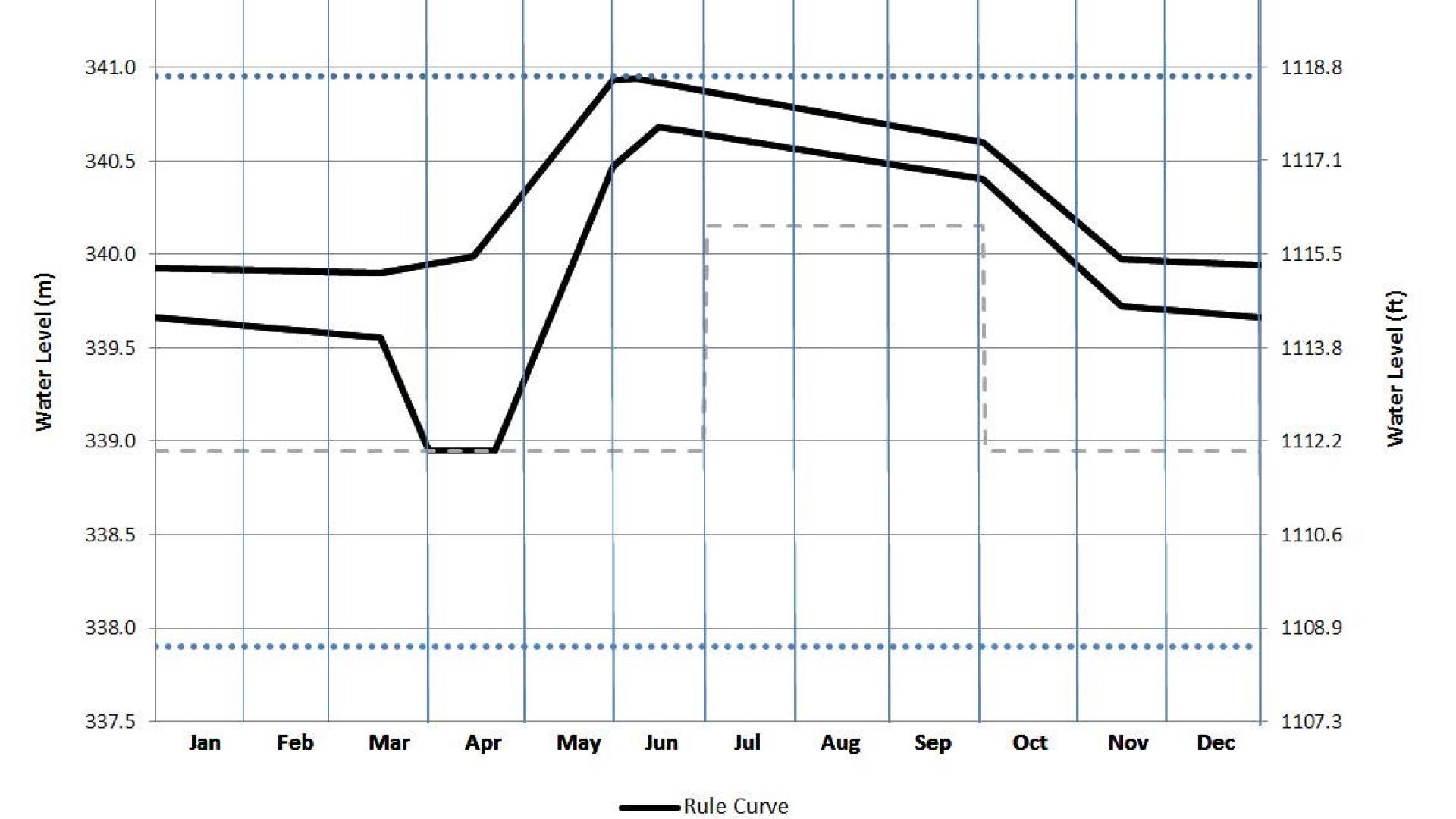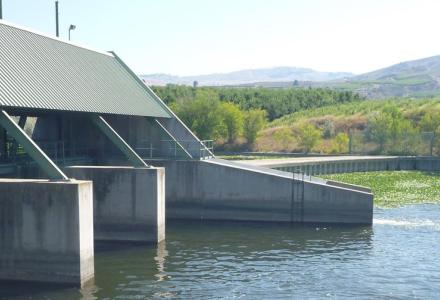

Among the winners of new rule curves for Rainy and Namakan lakes are vital fish species like cisco and lake whitefish, the water-based recreation industry and muskrats. The curves went into effect this month.
The updated rule curves – which provide the dam operators with a target range within which water levels must be managed through the year – for the lakes located in Ontario and Minnesota came out of recommendations issued by the Rainy Namakan Rule Curves Study Board in 2017. The board came up with the recommendations following two years of research and consultation with the public, scientists, hydropower companies, indigenous communities and business owners.
Overall, the board found the 2000 rule curves were a marked improvement over the ones set in the 1970s, but there was room to change how dam operators manage water supplies, said Erika Klyszejko, hydrological engineer with Environment and Climate Change Canada and co-chair of the Rainy-Lake of the Woods Watershed Board’s Water Levels Committee.
The biggest difference between the older rule curves and the new ones come in the fall months, which will see a speedier drawdown of water levels on Rainy and Namakan lakes, prior to the lakes freezing over. This reduces the amount being drawn down during the winter months, and should help improve muskrat survival rates over the winter, which previously were abysmal under the 2000 rule curves.

Helping muskrats survive the winter brings several ecological benefits, Klyszejko said: The muskrats feed on invasive hybrid cattails, which are choking out native wetland plants like wild rice. More muskrats are expected to be a natural control on the cattails and increase wild rice habitat. The muskrats create channels in wetlands that vital fish species use to spawn, so their presence should in turn strengthen the local fish populations. Additionally, the changes in the fall drawdown should improve winter survival rates for invertebrate species near the bottom of the food web. On the flip side, this is expected to reduce the amount of energy produced by hydropower plants in the system.

Rainy Lake in particular will see one additional change in the springtime. In years where the water levels committee expects a wet spring – either due to a wet springtime forecast, heavy snowpack or some combination of both – it can direct dam operators to implement the “high flood risk rule curves.” This allows the lake to be drawn down below the normal rule curve between the months of April and July, and creates additional storage on Rainy Lake for water, which can help reduce flooding. Klyszejko cautions however that these measures won’t be able to stop water from rising beyond the rule curve limits in the event of a major flood.
“It’s a matter of centimeters or inches off the peak water level,” Klyszejko said.
To determine flood risks, the water levels committee first will look at how wet or dry the system was in the fall, said Scott Jutila, hydraulic engineer with the US Army Corps of Engineers and water levels committee member. It’ll also look at baseline water flows in March, as high flows indicate flood risks, how much snow has fallen and how likely it is to melt later in the spring, and seasonal outlooks from Canadian and US weather and climate agencies. Finally, the committee will meet with the public in early March each year to gather input.
“We can let them know what we’re seeing from our sources, but they live in the basin, so they know local conditions,” Jutila said. And even if the committee advises dam operators to go for the flood risk rule curves, it can ask them to change course if weather conditions change and no flood is eminent.
The new rule curves also allow dam operators to use the full range of the rule curves, and not just the central band. This allows the water levels committee to actively target specific areas of the band to benefit various interests as conditions allow.
For example, during times when high or low water levels aren’t expected (bringing emergency conditions with them), dam operators should consider limiting outflow increases or decreases from Rainy Lake to reduce the impact of rapid flow changes on Rainy River. This example could in turn be a boon to anglers and swimmers along the system, who wouldn’t see water flows changing suddenly under normal conditions. Dam operators also can better maintain water levels ideal for establishing and harvesting wild rice plants – important considerations for indigenous communities along the water system.
Changes to the climate or ecosystem might require additional tweaks to the rule curves – or a brand new plan – in 15 years, when the rule curves are next formally reviewed. During that 15-year period, water management will include “adaptive management” measures to get a sense about how the rule curves might need to be adjusted for changing conditions in the watershed, Jutila said. Studies will be ongoing over that time period: to examine how fish species are doing, problems with invasive species, water supplies and changes to water temperatures. The Rainy Lake of the Woods Watershed Board will be naming an adaptive management committee to collect that data on how the new rule curves are performing over that 15-year period, Klyszejko said.
The new curves don’t address every topic – such as how water levels impact a variety of other native plant species – and Klyszejko said that hopefully those knowledge gaps will be better filled by the time the next review takes place.
“If we find over time that conditions aren’t following the trends we expect, we may recommend adjustments to the rule curves after the next review,” Jutila said.

Kevin Bunch is a writer-communications specialist at the IJC’s US Section office in Washington, D.C.



